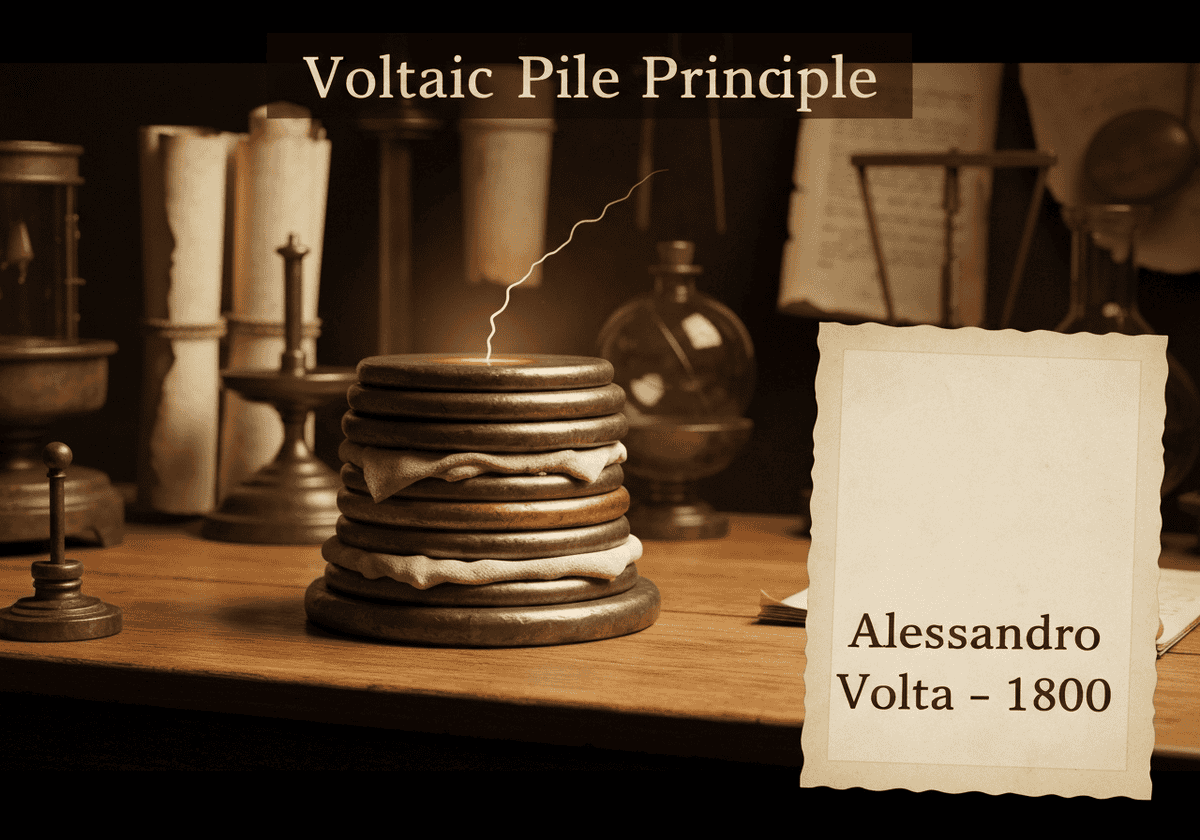它是第一个电池,通过堆叠成对的不同金属片(例如锌和铜),并用浸过盐水的布隔开,从而产生直流电。每对金属片构成一个原电池,将它们串联起来可以提高总电压。这种结构首次实现了化学能向电能的连续转化,为现代电化学奠定了基础。


(generate image for illustration only)
它是第一个电池,通过堆叠成对的不同金属片(例如锌和铜),并用浸过盐水的布隔开,从而产生直流电。每对金属片构成一个原电池,将它们串联起来可以提高总电压。这种结构首次实现了化学能向电能的连续转化,为现代电化学奠定了基础。
伏打电堆的工作原理基本遵循电化学串联原理。当两种不同的金属(例如锌和铜)通过电解液(在本例中是浸有盐水的纸)连接时,就会发生电化学反应。锌的反应性更强,容易氧化,失去电子并形成锌离子,这些锌离子会溶解到电解液中。这些电子沿着外部金属路径到达铜片。在铜片表面,会发生还原反应;通常情况下,电解液中水中的氢离子会接受电子并形成氢气。这种电子流动就形成了电流。
Each zinc-copper pair, separated by the electrolyte, is a single ‘cell’ that produces a small voltage (around 0.76 volts). The genius of Volta’s design was stacking these cells in series. By placing them one on top of another (copper, zinc, brine-soaked cloth, copper, zinc, etc.), the voltages of the individual cells add up. A pile with 20 cells could produce about 15 volts. This was the first device to provide a steady, continuous source of electric current, unlike the static discharges from Leyden jars.
However, the Voltaic pile had significant limitations. The hydrogen gas produced at the copper electrode would form a layer of bubbles, insulating the electrode from the electrolyte. This phenomenon, known as polarization, quickly increased the internal resistance and caused the voltage to drop. Additionally, the electrolyte would leak and evaporate, and local short-circuits could occur, limiting its practical 寿命.
迎接新挑战
机械工程师、项目、工艺工程师或研发经理
可在短时间内接受新的挑战。
通过 LinkedIn 联系我
塑料金属电子集成、成本设计、GMP、人体工程学、中高容量设备和耗材、精益制造、受监管行业、CE 和 FDA、CAD、Solidworks、精益西格玛黑带、医疗 ISO 13485
伏打电堆原理
(如果日期不详或不相关,例如 "流体力学",则对其显著出现的时间作了四舍五入的估计)。
相关发明、创新和技术原理
{{标题}}
{%,如果摘录 %}{{ 摘录 | truncatewords:55 }}
{% endif %}